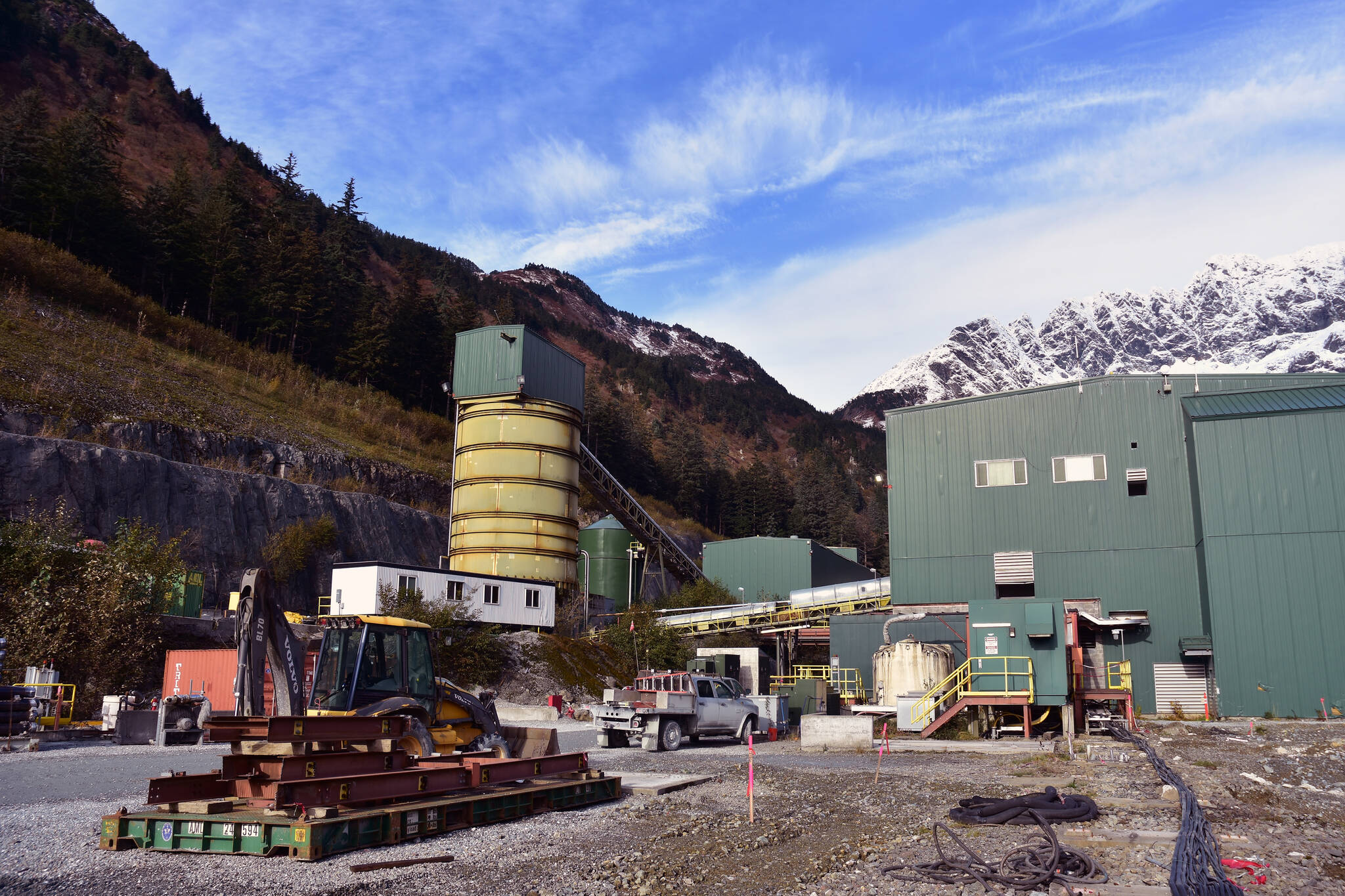A paper released Wednesday by the Institute of Social and Economic Research at the University of Alaska Anchorage envisions what the state’s mining industry could look like in 20 years. The paper’s authors — UAA professors Bob Loeffler and Brett Watson — are hosting a webinar on March 14 to discuss their findings.
“We’re not making policy recommendations,” Loeffler said in an interview with the Empire. “We do have some observations.”
The study looks at mining projects in the state that are either currently operating, in permitting or in exploration and assesses the likelihood of them operating in 20 years. There are a lot of unpredictable factors that go into that, so the study tried to look at projects’ potential under three different scenarios; one with conditions more favorable to the mining industry; one where the status quo prevails and one with unfavorable conditions for the industry.
[Alaska pushes ahead with Russian divestment]
The study comes as Alaska’s lawmakers push for increased resource production in the state. Many of Alaska’s elected officials have long advocated for increased resource production in the state and those calls have accelerated in recent weeks as the Russian invasion of Ukraine creates uncertainty in the world market.
President Joe Biden Tuesday announced a ban on Russian oil imports leading Alaska’s leaders to say the state could help fill the gap. Gov. Mike Dunleavy and Alaska’s congressional delegation have been deeply critical of the Biden administration’s environmental policies and have repeatedly called for federal regulations to allow increased resource development.
In addition to oil, lawmakers have touted the state’s mineral resources as a potential supplier of the elements needed in electronics needed in many renewable energy technologies.
To define ‘favorable conditions,’ the authors looked at a 2020 survey of mining companies conducted by the Fraser Institute in Canada. According to that survey, the top concerns mining companies had when looking at Alaska were uncertainty in regards to regulation and enforcement and the lack of infrastructure.
Loeffler said the study looked at the companies’ top concerns and imagined a scenario where those issues were improved. That included a stable, transparent system of administration and enforcement of regulations and environmental laws; clarity on where mining is allowed around protected areas; improved infrastructure like roads and power and public support or non-opposition to the project.
According to the study the mining industry provided roughly 3,900 direct jobs in Alaska in 2019, but under favorable projections, ISER estimates that number could more than double to 8,500. However, under unfavorable conditions, the study estimates the state’s mining jobs would fall to roughly 2,600.
The paper looks only at the economic impacts of mining projects, and because of its size, controversy and permitting status, the proposed Pebble Mine was left out of the paper’s analysis. Loeffler said the study didn’t look at environmental impacts because it was limited in scope.
“That’s not because they’re not important that’s not what the study does,” Loeffler said. “We’re not supporting or advocating against (projects), but environmental questions is a different study.”
Loeffler said the state has mineral deposits of resources important to the U.S. economy. The state already supplies 80% of U.S. zinc and 44% of its lead production, Loeffler said, noting that last year zinc was added to the list of critical minerals by the U.S. Geological Survey.
The paper notes that mines can bring a transformative amount of wealth to rural villages in Alaska, some of which have few private employers. Authors wrote that since its founding the Red Dog Mine has provided NANA Regional Corp. with roughly $2.4 billion, much of which has been shared with other Alaska Native corporations. Provisions in the Alaska Native Claims Settlement Act say that 70% of revenue from minerals on land owned by an Alaska Native regional corporation is shared with all Alaska Native regional corporations, and half of that is shared with Alaska Native village corporations.
“Red Dog has had a very big effect on employment and income and even a number of social things for the Northwest Arctic Borough,” Loeffler said. “In rural areas, a mine can be transformative in supporting all of the things that economic development.”
However, Loeffler noted that much of Alaska’s mining potential is dominated by two projects; the Donlin Gold Mine and projects in the Ambler mining district. Together, those two projects could account for 40% of the new mining jobs in Alaska under the study’s favorable conditions.
Additionally, Loeffler noted that many of the proposed projects are within 30 miles of existing transportation infrastructure, including the ocean, which authors included as a kind of infrastructure. Roughly 60% of mining industry respondents to the Fraser survey cited lack of infrastructure as a deterrent to investment in Alaska, the study says.
But any new mining projects in Alaska are several years away, Loeffler said.
“Starting mines is a long-term prospect, we could produce a lot more but it’s going to take a long time,” Loeffler said. “Alaska certainly could see expanded exploration this summer, but an increase in production is most likely a number of years away. Increased prices may increase production at existing mines but new mines are several years away.”
A webinar, “The Economic Potential of Alaska’s Mineral Industry,” will be held Monday, March 14, from Noon-1 p.m. Free registration is available at iseralaska.org.
• Contact reporter Peter Segall at psegall@juneauempire.com. Follow him on Twitter at @SegallJnuEmpire.

